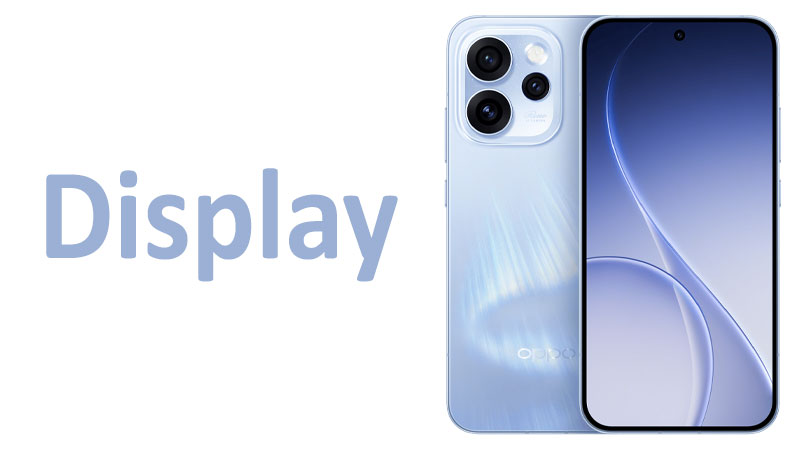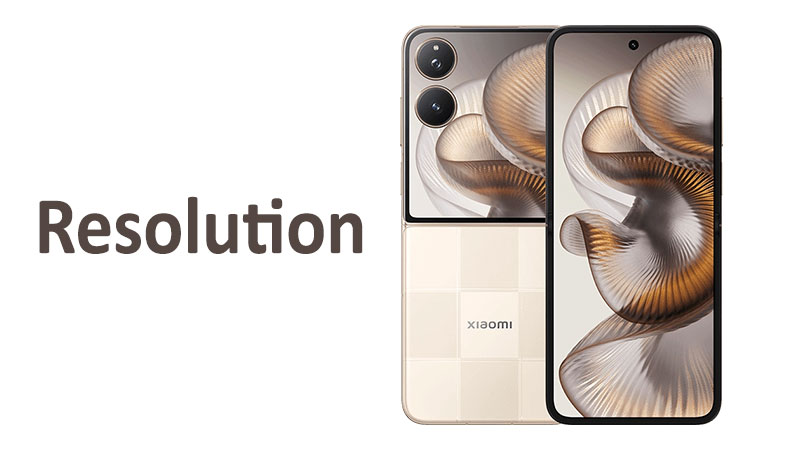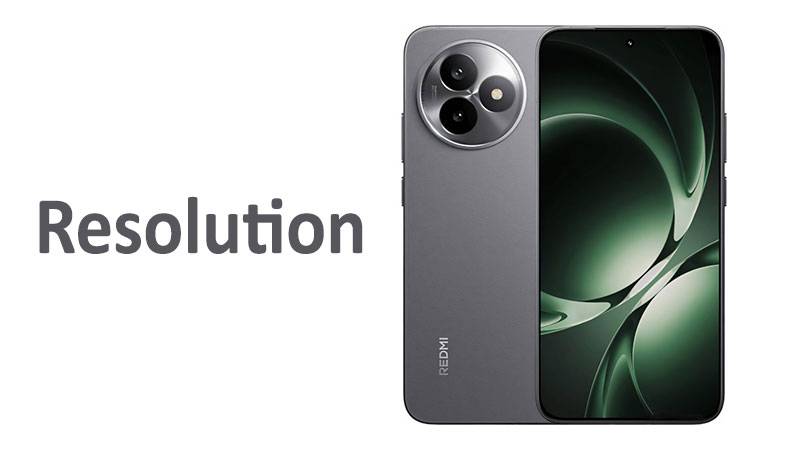The OPPO Reno 15 display sets a formidable new benchmark for the premium mid-range smartphone segment. It brings a host of flagship-level features, including an ultra-smooth 120Hz refresh rate and specialized eye comfort technology. This detailed review explores every crucial aspect of the Reno 15’s visual performance, examining the core specifications, real-world quality, and what these advanced features mean for the everyday user and demanding mobile enthusiast. We break down the technology behind the stunning visuals, helping prospective buyers understand the true value of this significant hardware upgrade.
Core Display Specifications Breakdown
The visual experience starts with the raw hardware specifications. OPPO equipped the Reno 15 with a panel designed for both high performance and superior comfort. Understanding these core numbers allows us to appreciate the display’s potential.
Panel Technology and Color Depth
The OPPO Reno 15 uses an AMOLED panel. AMOLED, or Active-Matrix Organic Light-Emitting Diode, is the industry standard for premium smartphones today. This technology allows each pixel to emit its own light. It results in perfect, true black levels when pixels are completely turned off.
The display supports 1 billion colors. This 10-bit color depth capability ensures a massive leap in color fidelity compared to older 8-bit panels, which support only 16.7 million colors. Users experience smoother gradients and incredibly lifelike hues, especially when viewing HDR content or professional photography. The color range remains consistent across the entire screen.
Size and Form Factor
The Reno 15 features a 6.32-inch screen size. This offers a great balance between screen real estate and ergonomic comfort. The phone feels relatively compact for a modern device, making one-handed use easier for many users. The display occupies approximately 97.9 square centimeters of area.
The screen-to-body ratio is highly competitive at around 89.5%. This measurement confirms the presence of extremely slim bezels around the viewing area. Minimal bezels contribute to a more immersive media consumption experience. It also gives the device a sleek and modern appearance.
This size choice places the Reno 15 as one of the more pocketable premium devices available. It contrasts with the trend toward massive, heavy smartphones, offering a high-quality display in a more manageable format.
Resolution and Pixel Density Analysis
Resolution determines the sharpness and clarity of the on-screen image. The Reno 15 introduces a highly specific and high-density resolution setup.
Detailed Resolution Metrics
The screen resolution measures 1216 x 2640 pixels. This is often referred to in the industry as a 1.5K resolution. It sits comfortably between the standard Full High Definition Plus (FHD+) and Quad High Definition Plus (QHD+) resolutions. The unique 19.5:9 aspect ratio provides a taller viewing canvas than traditional cinema formats. This ratio is excellent for scrolling through social media feeds and multitasking with split-screen applications.
Pixel Density and Sharpness
The pixel density registers at approximately 460 pixels per inch (ppi). This density ensures that individual pixels are virtually indistinguishable to the naked eye under normal viewing conditions. Text appears crisp, and detailed graphics render with excellent definition. Users will notice a significant clarity improvement over devices with lower ppi counts, especially when reading small fonts or viewing intricate photos.
This 1.5K resolution strikes an effective balance. It provides near-flagship sharpness without the heavy power draw of a full QHD+ panel. OPPO optimizes battery life while delivering outstanding visual quality.
Specialized Resolution Comparison
Previous Reno models often featured standard FHD+ (1080p) resolutions, typically yielding densities around 402 ppi for a similar screen size. The jump to 1.5K in the Reno 15 is a crucial upgrade. It places the device in direct competition with higher-end mid-range and entry-level flagship phones. This resolution upgrade significantly enhances the viewing experience for streaming high-definition video content and detailed mobile gaming. Competitors sometimes prioritize QHD+ screens, but these often require users to manually downscale the resolution to conserve battery, negating the benefit. The Reno 15 offers a native resolution that is already optimized for a fantastic visual experience and efficient power usage.
Fluidity and Response: The 120Hz Experience
The refresh rate dictates how many times the screen updates the image per second. High refresh rates transform the way a user interacts with their device.
The Power of 120 Hertz
The OPPO Reno 15 boasts a 120Hz refresh rate. This means the display refreshes 120 times every second. This refresh speed is double the standard 60Hz rate found on many budget and older phones. The most immediate benefit is noticeable during scrolling. Scrolling through web pages, application drawers, and menus feels dramatically smoother and more responsive.
For mobile gaming, the 120Hz rate is a major asset. Games supporting high frame rates deliver fluid motion and reduced input lag. This smoothness provides a competitive edge in fast-paced titles. It also makes casual gaming far more enjoyable and immersive.
Optimization and Adaptability
While the provided specifications do not explicitly mention LTPO (Low-Temperature Polycrystalline Oxide) technology, the implementation of 120Hz is essential. If the refresh rate remains fixed at 120Hz, it will consume more battery power. Modern high-end displays often incorporate adaptive refresh rate technology. This allows the panel to drop down to 1Hz or 10Hz when viewing static content like an e-book or a photo. This optimization is crucial for achieving all-day battery performance without sacrificing the peak smoothness of 120Hz when required. A smart refresh rate engine manages this dynamically based on the content being displayed.
Brightness, HDR, and Outdoor Visibility
Screen brightness is one of the most critical factors determining a phone’s usability, especially under direct sunlight. The Reno 15 features impressive brightness figures that place it firmly in the premium category.
High-End Brightness Metrics
The display achieves a typical brightness of 600 nits. This provides adequate visibility indoors and in standard environments. More importantly, the High Brightness Mode (HBM) boosts the output significantly to 1800 nits. HBM automatically activates under bright ambient light conditions, ensuring the screen remains legible even outdoors on a sunny day.
The device also boasts a staggering peak brightness of 3600 nits. This extreme brightness level is typically reserved for small areas of the screen when displaying High Dynamic Range (HDR) content. It allows for blindingly bright specular highlights in movies and videos, providing maximum contrast and depth.
HDR10+ Certification
The OPPO Reno 15 display supports HDR10+. This certification ensures the screen can accurately decode and display video content encoded with the HDR10+ standard. HDR content offers a much wider range of colors and luminosity compared to standard SDR content. This makes supported videos on platforms like Netflix, Amazon Prime Video, and YouTube dramatically more vibrant and realistic. The high peak brightness capability works in tandem with the HDR10+ support, creating an exceptional mobile cinematic experience.
Specialized Brightness Comparison
The 3600 nits peak brightness is exceptionally high and competitive even against current flagship phones in late 2024. Many competing models cap out around 2500 to 3000 nits peak brightness. The Reno 15’s HBM of 1800 nits ensures great real-world usability. Older Reno generations typically offered HBM levels closer to 1200 or 1500 nits. This massive brightness increase translates directly to superior performance for users who spend significant time using their phone outdoors. It greatly minimizes screen washout and improves the overall viewing quality in challenging lighting.
Advanced Eye Comfort: 3840Hz PWM Dimming
Pulse Width Modulation (PWM) dimming is the method most AMOLED panels use to control brightness below a certain threshold. For some sensitive users, low-frequency PWM flicker can cause eye strain, headaches, or fatigue.
Understanding High-Frequency PWM
The Reno 15 utilizes an ultra-high frequency PWM dimming rate of 3840Hz. This represents a significant focus on user eye health. Traditional AMOLED panels often use low frequencies, sometimes around 240Hz or 480Hz. These low frequencies are perceptible to a small portion of the population and can cause discomfort.
The 3840Hz frequency is far above the human eye’s flicker fusion threshold, which is typically around 3,000Hz or less. Operating at 3840Hz makes the flicker virtually invisible to everyone. This feature ensures a flicker-free, comfortable viewing experience even in extremely low light settings, such as reading in bed late at night.
Eye Health Advantage
OPPO positions this 3840Hz PWM dimming as a key health feature. It directly addresses a known drawback of OLED technology. The implementation shows a commitment to providing a top-tier visual experience that does not compromise long-term eye comfort. Users who previously avoided AMOLED screens due to sensitivity should find the Reno 15 panel much gentler on their eyes. This technology makes the phone suitable for extended reading and long gaming sessions.
Specialized PWM Dimming Comparison
OPPO, alongside sister brands, pioneered the adoption of ultra-high frequency PWM. While many mainstream competitors from brands like Samsung and Apple still utilize lower frequencies (sometimes below 500Hz), the 3840Hz rate in the Reno 15 firmly places it among the industry leaders in eye protection technology. Competing brands that focus on eye comfort typically offer 2160Hz or 3000Hz PWM. The Reno 15’s 3840Hz frequency represents a further refinement of this risk-free dimming approach. It provides a clear, measurable advantage for users prioritizing visual health.
Display Protection and Durability
A world-class display requires robust protection to handle the rigors of daily life. The OPPO Reno 15 uses specialized reinforced glass technology.
Reinforced Glass Technology
The display features reinforced glass protection. While the exact brand (like Gorilla Glass or DragonTrail) is not specified, reinforced glass indicates a high level of engineered protection. This glass offers superior scratch resistance against keys and coins. It also provides enhanced durability against drops and impacts, which are common accidents for mobile devices.
The edges of the display likely feature a subtle curve or 2.5D bevel. This improves the tactile feel when swiping from the edge. It integrates seamlessly with the phone’s frame, improving overall build quality.
Longevity and Maintenance
Reinforced glass is crucial for maintaining the optical quality of the screen over time. Small scratches can diffuse light and reduce the perceived contrast and clarity. The high-quality protective layer on the Reno 15 helps keep the pristine visual experience intact for longer. However, buyers should still consider using an additional screen protector for maximum security against severe drops.
Pros and Cons of the OPPO Reno 15 Display
Evaluating any component requires a balanced view of its strengths and potential limitations. The Reno 15 display offers numerous advantages but also presents a few design constraints.
Display Pros
- Exceptional Clarity: The 1.5K resolution (460 ppi) delivers high sharpness without excessive battery drain.
- Superior Fluidity: The 120Hz refresh rate ensures smooth and responsive navigation and gaming performance.
- Ultimate Eye Comfort: The industry-leading 3840Hz PWM dimming minimizes screen flicker, greatly benefiting sensitive users.
- Flagship Brightness: With 3600 nits peak and 1800 nits HBM, outdoor visibility and HDR playback are outstanding.
- Rich Color Reproduction: Support for 1 billion colors and HDR10+ provides professional-grade color accuracy and vibrant media consumption.
- Compact Design: The 6.32-inch size offers high performance in a relatively ergonomic, one-handed package.
Display Cons
- Fixed Refresh Rate (Potential): If the 120Hz panel is not LTPO or highly adaptive, it will consume more power than the latest flagship screens that can drop down to 1Hz.
- Not Full QHD+: While 1.5K is excellent, it does not achieve the ultra-high density of a true QHD+ (e.g., 525 ppi) panel found in the absolute top-tier flagships. Most users will not notice the difference, but it represents a technical constraint.
- Glass Type Unspecified: Not naming a specific, well-known reinforced glass (like the latest Gorilla Glass generation) might raise minor durability questions for some highly informed consumers.
Important Points for Buyers and Readers
A potential buyer should consider several practical elements regarding the Reno 15 display features. These points affect long-term use, battery life, and overall satisfaction.
Battery Optimization and Refresh Rate
The 120Hz refresh rate is wonderful, but users should understand its power implications. If the phone defaults to 120Hz for all activities, the battery life will decrease noticeably compared to 60Hz. Buyers should check if the ColorOS software includes a smart switching mode. This adaptive mode automatically selects the most efficient refresh rate based on the application. Users should utilize this setting to balance performance and endurance.
The True Value of High-Frequency Dimming
The 3840Hz PWM dimming is perhaps the most undersold feature. Customers who have previously experienced eye strain or headaches with older OLED phones should pay special attention to this. This feature makes the Reno 15 an excellent choice for night-time readers or heavy users in dim environments. This high frequency removes the need for DC Dimming modes, which sometimes sacrifice color accuracy or uniformity at low brightness.
HDR Content Availability
While the display supports 10-bit color and 3600 nits peak brightness, users can only experience this quality when viewing certified HDR10+ content. Standard YouTube videos or regular social media feeds will look excellent but will not push the panel to its absolute limits. Subscription services like Netflix or Disney+ are necessary to fully utilize the display’s HDR capabilities.
Screen-to-Body Ratio and Accidental Touches
The slim bezels contribute to the fantastic 89.5% screen-to-body ratio. However, extremely thin bezels sometimes lead to accidental touches or input issues, especially when holding the phone tightly. OPPO typically implements sophisticated palm rejection software. A buyer should verify the effectiveness of this software during their initial use period.
Detailed Focus on Key Performance Areas
The specifications translate into tangible improvements in three key user scenarios: media consumption, mobile gaming, and general daily use.
Media Consumption Experience
The combination of AMOLED, 1.5K resolution, and HDR10+ creates a first-class media platform. Videos are rendered with stunning depth, vibrant colors, and deep blacks. The 6.32-inch size provides an immersive, cinematic feel without being overly cumbersome. The 19.5:9 aspect ratio is also beneficial for watching modern movie content, which often utilizes a wider format, minimizing black bars. The high brightness levels mean users can confidently watch films outdoors or on brightly lit public transport. This is a display built for dedicated binge-watching and high-quality streaming.
Mobile Gaming Performance
The 120Hz refresh rate is non-negotiable for serious mobile gamers. It provides a distinct advantage in reflex-based games where seeing action faster matters. The low response time inherent to AMOLED technology further minimizes motion blur, keeping fast-moving objects sharp and clear. The high ppi density ensures graphics render with fine detail. This combination of speed, clarity, and responsiveness makes the Reno 15 display a powerful tool for competitive gaming. The efficient power draw of the 1.5K resolution also allows the chipset to run cooler and maintain high frame rates for longer sessions compared to resource-hungry QHD+ screens.
Daily Productivity and Reading
For non-media tasks like reading emails, browsing the web, or working on documents, the eye comfort features take center stage. The 3840Hz PWM dimming makes continuous screen interaction less fatiguing. This level of flicker mitigation is crucial for professionals and students who spend hours staring at their phones. The excellent contrast ratio of the AMOLED panel also makes dark mode content highly readable, preventing the grayish blacks sometimes seen on LCD screens. Text remains sharp due to the 460 ppi density, ensuring maximum comfort during extended reading sessions.
Conclusion: Making an Informed Decision
The OPPO Reno 15 display represents a convergence of cutting-edge display technologies. It does not just meet current high-end standards; it exceeds them in critical areas like eye comfort and peak brightness. The 6.32-inch AMOLED panel delivers a near-flagship experience with its 1.5K resolution, 120Hz smoothness, and 1 billion color depth.
Buyers looking for a display that excels in outdoor visibility, provides a smooth gaming experience, and, most importantly, protects their eyes in low-light conditions should consider the Reno 15. The 3840Hz PWM dimming sets this phone apart from many rivals, making it the superior choice for sensitive users. While it stops short of a power-draining QHD+ resolution, the 1.5K sweet spot ensures outstanding clarity and strong battery efficiency. The Reno 15 offers tremendous display value, balancing top-tier quality with crucial health-conscious engineering. It truly provides a flagship-level visual experience in a more accessible package.
Frequently Asked Questions (FAQ)
What is the main benefit of the 3840Hz PWM dimming?
The primary benefit is significantly reduced screen flicker, especially at low brightness settings. This prevents eye strain, headaches, and fatigue for users sensitive to the low-frequency flicker present in many older or competitor OLED displays.
Does the 120Hz refresh rate drain the battery quickly?
A higher refresh rate inherently uses more power than 60Hz. However, the Reno 15 likely uses a smart, adaptive system within ColorOS to manage the rate dynamically. This optimization ensures a high refresh rate is only used when necessary, helping to mitigate excessive battery drain.
Is the 1.5K resolution sharp enough compared to 2K (QHD+)?
Yes, the 1.5K resolution with 460 ppi density is exceptionally sharp. The difference between 460 ppi and the 500+ ppi of QHD+ panels is virtually imperceptible to the vast majority of human eyes. This resolution choice helps OPPO optimize both visual quality and battery life effectively.
Can I view the Reno 15 display clearly in bright sunlight?
Absolutely. The display’s High Brightness Mode (HBM) can reach 1800 nits. This high level of brightness ensures excellent legibility and minimal washout even under direct, strong sunlight, making the phone very usable outdoors.
What kind of protection does the reinforced glass provide?
The reinforced glass protects the screen from common hazards like minor scratches, scuffs, and small impacts from everyday use. It ensures the panel maintains its pristine optical clarity over the life of the phone.



